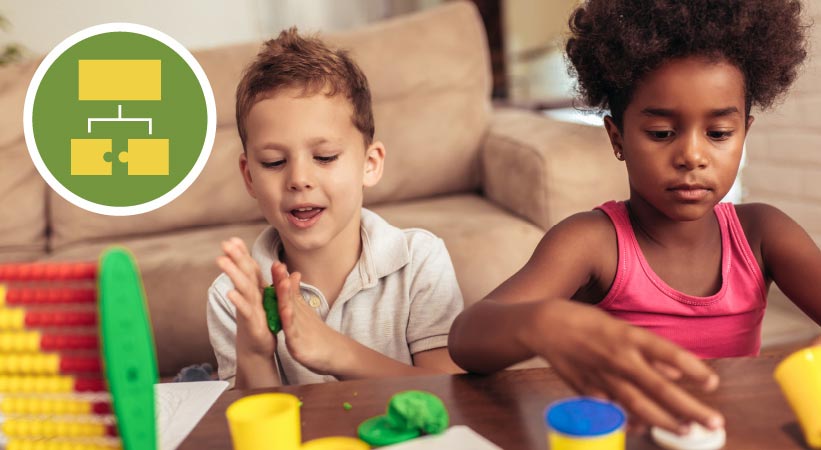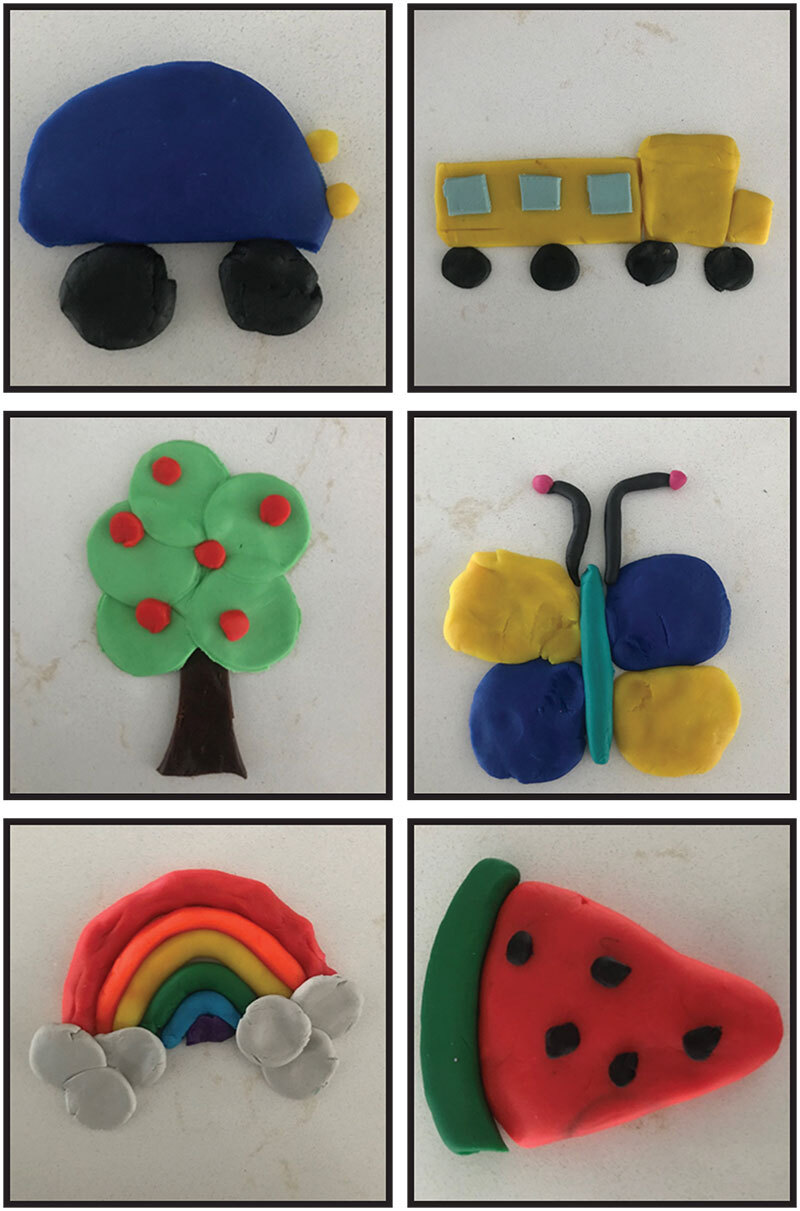
Children will make playdough creations and engage in problem decomposition as they make creations. Children will identify all the SMALLER tasks they can tackle to make their BIG creation. Children will share their thoughts about breaking down the parts to make the BIG task easier. As children engage in this activity they will have opportunities to identify and replicate shapes, count objects, compare lengths, and explore cardinality.
Explain and define problem decomposition.
Provide a set of playdough creation images/cards. [NOTE: Example images are provided below. You may use these to create images/cards for children or make up your own ideas!] Explain that each child is going to make a playdough creation, and will focus on how to break down the big task into smaller parts so they can more easily build their own version. Invite each child to pick an image/card that will show them what to make.
Promote math talk as children work; invite children to notice and identify shapes and to count.
Once the children have completed their playdough creations, encourage them to share their process.
